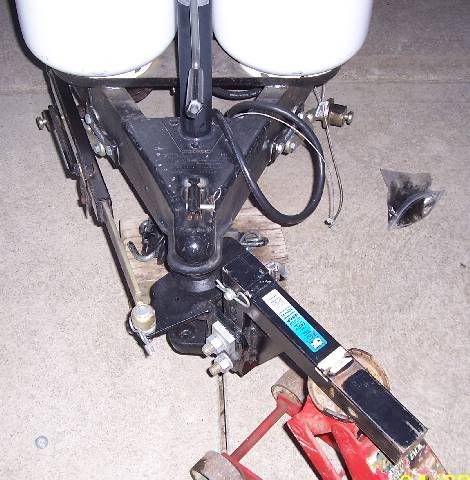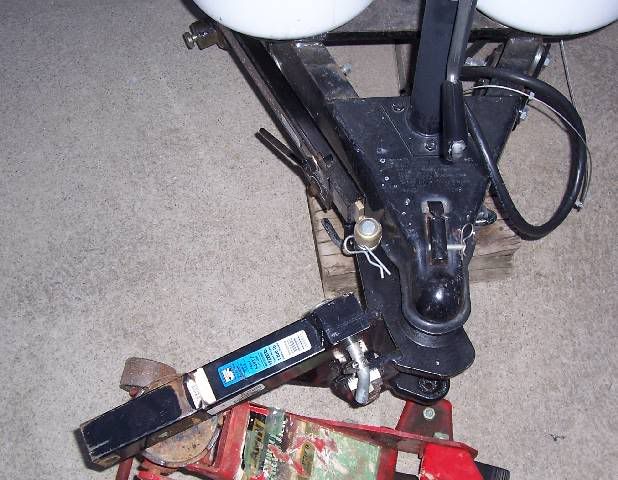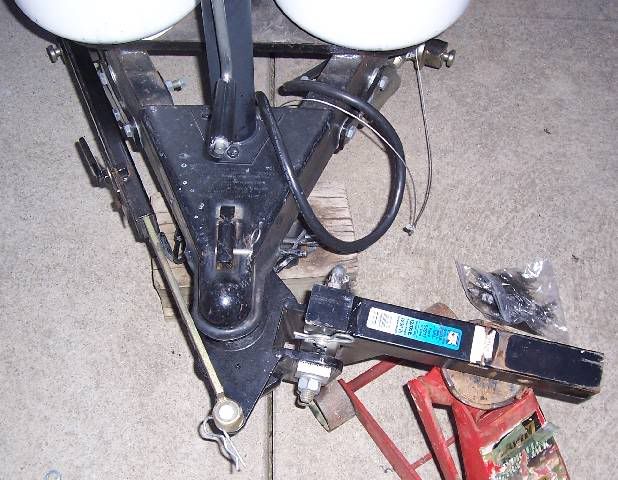I'll add some to the good responses already made.
This sounds like you may have a pop up or other light weight camper not needing weight distribution. Is this a correct assumption?
Those lighter weight carrying draw bars are the ones that have the little arm welded to them for a friction anti sway bar.
Now to which side, as was said, most often the right side (passenger side) of the truck gets the anti sway bar. I say this as the right side generally has less turning angle when backing up or the way many camp sites are made. Less turning angle mean less odds for bending up the anti sway bar.
And the most common hand of anti sway bar made, has the pivot system setup to go on the right side of the camper. This means the words are reading correct looking at it and the on/off lever is on top. They do make left handed units where this is flip flopped.
If the anti sway bar was mounted on the left side (drivers side) it is more natural for you to turn sharper left doing tight maneuvers in the camp ground. Since you can see easier what you are doing on the drivers side, and many campsite are angled to the road making the left side the natural way to back in and in this case, often turn sharper.
All that said, there are some weight distribution hitches which have the ability to mount a friction sway bar on both sides. They work well, they can buy a left and right hand mount and the owners needs to be aware to take the friction bar off when backing up left hard. And for that matter it is good to take the right side off too if you are backing up in a tight spot. Very easy to go too far and bend it.
Some pop ups or other light weight campers have a tongue jack on the side of the A frame and sometimes that can be on either side. Obviously you cannot mount the sway bar on that side. They do work on both sides, just have to check what is in the way and be cautious about the turning concerns.
You did not ask, but I will throw this in to help. After you get the mini ball arm on the draw bar, you then need to mount the ball on the side of the A frame. Before you drill or weld on that ball mount on the A frame, verify that when the arm is approaching being fully retracted, you do "not" want to bottom out on the arm stroke before the max angle of turning. Ideally you can turn as sharp as possible to the point the draw bar arm hits the frame before the friction sway bar bottoms out.
See here. This is on a WD hitch but the issue is the same.
A mile left turn

A mild right turn

A max angle right turn. Note the hitch shank ball is at max turning angle and the friction sway bar is not yet totally collapsed.

And if you turn too far left, you can and will bend the bar on the coupler. This is one of the reasons to take this off when backing up under tight conditions.

Good luck, happy camping and Happy Thanksgiving too!
Hope this helps
John



